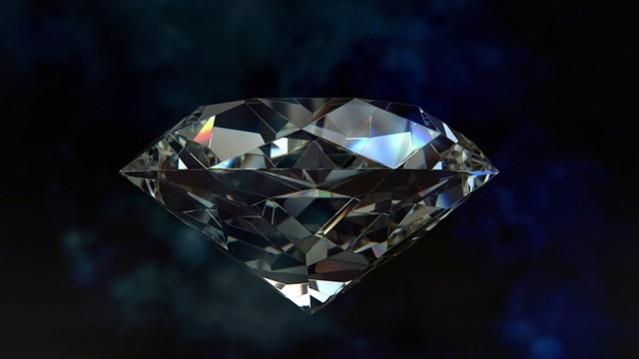
- Scientists found ice crystal trapped in diamonds.
- It was in form of a rare crystal structure called ice-VII.
- This ice doesn't exist on Earth's surface but forms deep inside the mantle.
- This hints that there are water pockets deep below the Earth's surface.
After geologists recently discovered a very rare mineral called calcium silicate perovskite trapped inside a tiny diamond, they have come across diamonds with water crystal inside them. What is so magnificent about them? It is the first-ever evidence of unbonded water present at extreme depths.
Scientists stumbled upon the water crystal while looking for a molecular form of carbon dioxide in three diamonds -- two from Africa and one from China. When X-rays scattered through the diamonds, Oliver Tschauner, a mineralogist at the University of Nevada, Las Vegas, and his colleagues spotted a different pattern. On closer inspection, they discovered a rare crystal structure called ice-VII.
What is more surprising? This ice doesn't exist on Earth's surface but forms deep inside the mantle, between 610 and 800 kilometers, where the pressure is greater than about 24 gigapascals, according to sciencenews.org.
This finding proves that water-rich fluid exists at the top of the lower mantle and also in the transition zone between the upper and lower mantle.
When the diamonds were formed, it probably encapsulated some liquid water from around the transition zone, but the high temperature prevented it to become crystal under the high pressures. When the diamonds are moved closer to the surface by geologic activity, the temperature dropped while maintaining the high pressure in their rigid crystal structures.
"One essential question that we are working on is how much water is actually stored in the mantle. Is it oceans, or just a little bit? This work shows there can be free excess fluids in the mantle, which is important," said Tschauner, as reported by gizmodo.com.
Here are 7 things we get to know about the Earth's inner structure from the finding
1. Scientists believe that there is 10 times more water in the transition zone of the mantle than the amount present in the upper layer.
2. It is believed that water gets dragged down deep into the Earth when portions of upper-crust sink into the mantle layer. Once they reach the transition zone, they shed the water. However, these were all in theory until now and this diamond is the first ever evidence of water from such depths.
3. The existence of water-rich fluids can alter our knowledge about the circulation that triggers tectonic plate movements and eruption of volcanoes.
4. Oded Navon, a mantle petrologist at the Hebrew University of Jerusalem said, the presence of water in the mantle will make it easier for rocks to melt and redistribute heat more easily within the layer.
5. Navon also added that few heat-producing radioactive elements, like potassium, thorium, and uranium prefer melted rock to exist and don't always fit into the rigid crystalline structures of minerals.
6. All these are expected to affect, over a long time, the rate at which heat escapes from the planet's interior.
7. Tschauner also pointed out that when water is incorporated inside diamonds formed at shallower depths, like 150 to 200 kilometers, they are a varied mixture of water, salt, and carbonates. But in this case, everything existed separately: ice in one, carbonates and salts in other two.
















